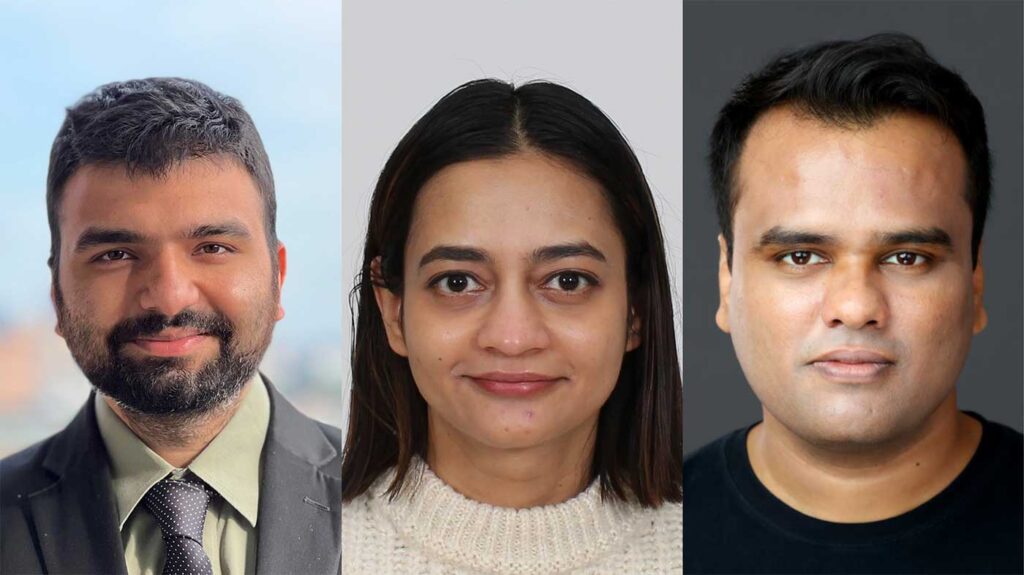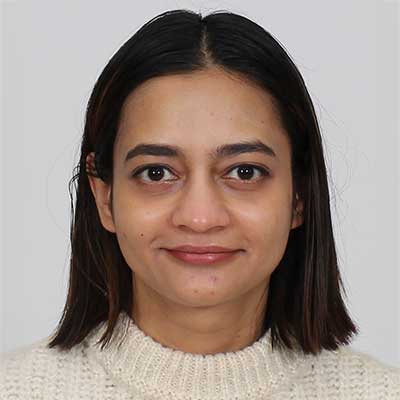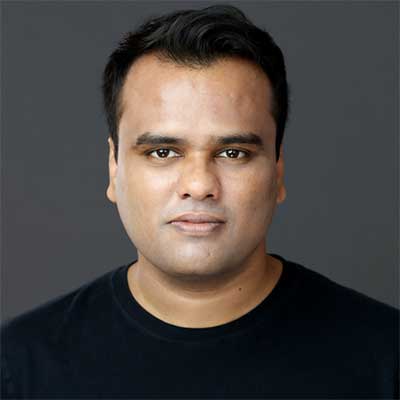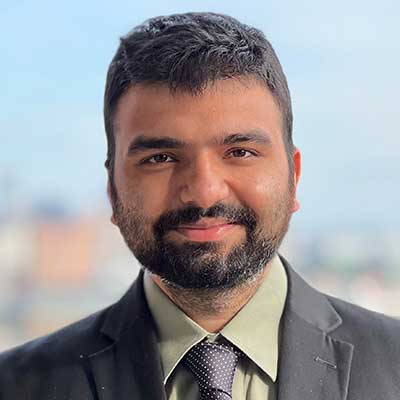At Red Hat, Khoury alumni champion open-source software
Author: Juliana George
Date: 09.23.24

Parul Singh always wanted to create things. What started as a childhood passion for makeshift art projects transformed into a love for coding and distributed computing, interests that she nurtured in her master’s studies in computer science at Khoury College.
Now Singh is a principal software engineer at Red Hat, the largest open-source software company in the world. Red Hat’s products range from Red Hat Enterprise Linux, the widely used operating system that made the company’s name, to cloud-native application development and IT automation tools. All of the company’s products are open source, meaning that the code underwriting the software is available for subscribers to view and modify to encourage democratic innovation.
Red Hat’s open-source approach is part of what drew Singh to the company to begin with.
“I strongly believe that the best innovation happens when there is more diversity and more brains involved than just 10 people in a company working behind closed doors,” she said. “History provides all the evidence that problems get solved more efficiently and for a larger community when people of many, many backgrounds come together.”

For Singh, that coming together began while she was taking “Fundamentals of Cloud Computing” at Khoury College, through which she obtained a research position at Mass Open Cloud. MOC is an educational cloud that partners with Northeastern University, Boston University, Harvard University, the Massachusetts Institute of Technology, and other Massachusetts-based institutions and companies (including Red Hat) to support open-source cloud development.
Singh credits the opportunity to work for MOC as the reason she later decided to complete a four-month software development internship at Red Hat. During that stint, Singh worked on the ChRIS project (ChRIS Research Integration System), a collaboration between Red Hat, MOC, and Boston Children’s Hospital that seeks to streamline medical imaging and rare disease identification through AI.
“These medical imaging analysis results would come in weeks or months, which could be a really long time for a critical patient,” she explained. “We were trying to reduce the analysis time to days or even minutes. I could tell that it was impactful, and that’s what you want your work to be.”
That experience working on such an important project ultimately drove her to pursue a full-time opportunity there, even as she received job offers from other companies. Now coming up on six years at Red Hat, Singh spends most of her time working on the Kepler project (Kubernetes-based Efficient Power Level Exporter), a tool designed to improve sustainability in the information and communications technology sector by monitoring energy consumption within the cloud. Kepler estimates the processes and units of computing that consume the most energy, allowing organizations and users to optimize their energy consumption.
“Sustainability doesn’t just extend to using your own grocery bag or recycling,” Singh said. “It’s having this awareness that everything that you do in your day has some kind of emission … So, solving this problem with the skill set that I have feels very nice.”
Open source, open management
Singh isn’t the only Khoury alum who was attracted to Red Hat for its open-source values. Gagan Kumar, a senior product manager at Red Hat who earned his master’s in computer science in 2018, applied to a three-month product management internship at Red Hat after an employee spoke to his “Fundamentals of Cloud Computing” class.
The company culture proved to be a perfect match for Kumar; not only did Red Hat prioritize open-source software, but it also practiced open management, promoting team collaboration and receptivity to new ideas. While working as an intern, Kumar pitched a product that would notify system administrators of potential product health risks and recommend preventive actions. This proactive solution differed from the primarily reactive approaches to failure offered by other cloud computing companies at the time, such as Amazon Web Services.
“I actually carried forward a lot of the things I learned from the Khoury program,” Kumar said. “We used to have a course called ‘Software Development Life Cycle,’ where I got to learn how software is built and who the users are. We call this ‘user story,’ and I was able to implement that in my internship.”

Kumar’s product pitch was accepted, and the tool is now integrated into Red Hat’s OpenShift, a Kubernetes distribution, to prevent cluster failures and ensure that the infrastructure is almost always available. Kumar’s ingenuity as an intern translated into a full-time role, and like Singh, he has now been at Red Hat for almost six years. As a senior product manager, he transitions Red Hat’s projects into marketable products that can be sold to customers. The project that’s closest to his heart is MOC, which he sees as a more democratic alternative to big-name cloud providers like AWS and Microsoft Azure.
“It’s like a David versus Goliath battle,” he said. “AWS and Azure are well-established cloud providers. But with MOC, we can prove users, especially researchers and academics, have an alternative open-source infrastructure to public cloud providers.”
“Anyone can build on it”
Rohan Devasthale, a recently hired software engineer at Red Hat and a 2023 graduate of Khoury College’s computer science master’s program, shares Singh’s and Kumar’s enthusiasm for open-source software.
“Red Hat’s products and code are all open source, so anyone can take it, work on it, build on it,” he said. “This open-source culture at Red Hat promotes collaboration. You’re not alone working on a product.”
Devasthale completed an eight-month co-op at Red Hat in 2022, where he worked on an MOC project called Elastic Secure Infrastructure, a platform enabling vendors to lease out unused bare metal machines (physical computer servers) to customers for maximum efficiency in computing workflow. He cites his Khoury College curriculum and TA work for Alden Jackson’s “Networks and Distributed Systems” course as key.

“Khoury has amazing coursework,” Devasthale said. “I remember taking algorithms, computer networks, and operating systems courses. All these courses are related to the work I do right now, and they involve really good hands-on projects.”
Devasthale has only been a full-time software engineer at Red Hat for a few months, but so far, he’s been involved with RHEL AI (Red Hat Enterprise Linux AI), an in-development generative AI platform that Red Hat is hoping will serve as an open-source alternative to large language models like ChatGPT.
Devasthale asserts that open-source software doesn’t just represent a way to make code more accessible — it also empowers students and amateur coders to cultivate their coding skills, even outside of a job or internship.
“Contribute to open-source projects,” he advises. “There are many open-source projects available on the Internet, like Linux, Kubernetes, Git, etc. If you feel like adding a feature or contributing something, that will help you understand how software works and how to write code in the way it’s written in industry. Contribute to open-source projects and keep learning.”
The Khoury Network: Be in the know
Subscribe now to our monthly newsletter for the latest stories and achievements of our students and faculty